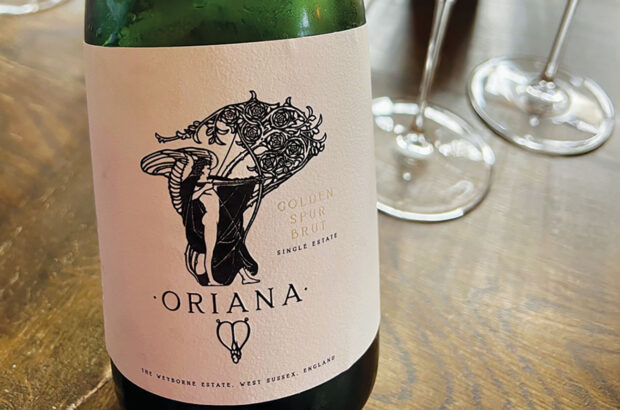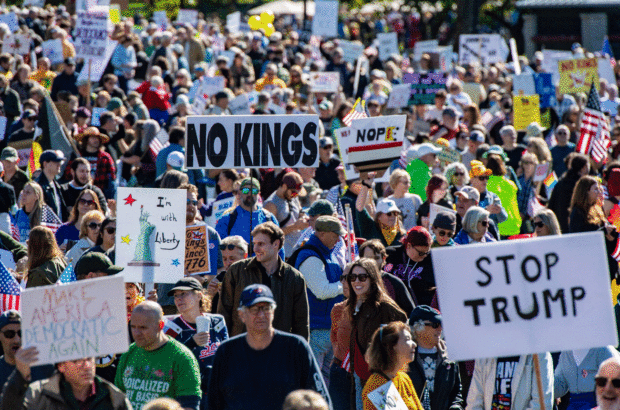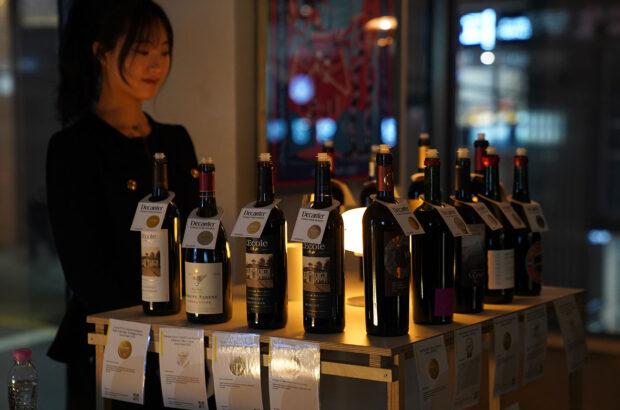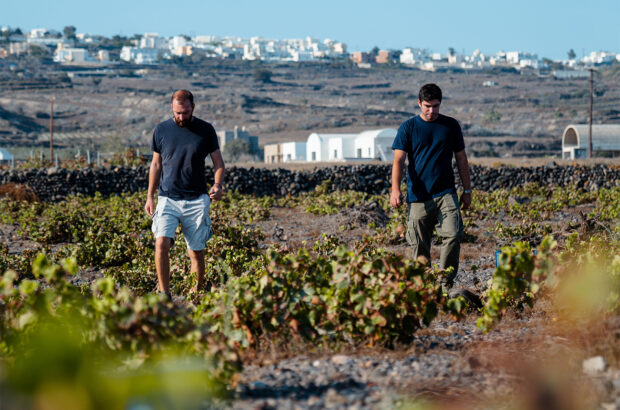°As if wine weren’t complicated enough, sustainable wine certification comes with various meanings. For wine-growing regions seeking to demonstrate a commitment to responsible land stewardship, one major challenge is defining what, exactly, ‘sustainability’ means in viticulture.
In the United States and Canada, no uniform charter or official or federally recognised standard for sustainable viticulture exists.
As with most regulations and designations in North American wine, there is a network of state or region-specific guidelines developed for local conditions, each with its own varying set of acceptable standards and practices. Most are formed out of interest from local wine-growers, supported by agricultural research and science, and are certified by third-party auditing.
What winemakers and growers passionate about sustainable viticulture uniformly share is a similar ethos. Most say sustainable wine certifications build on existing programmes already certifying organic, biodynamic, regenerative, salmon-safe, natural and other ‘eco-friendly’ wines with a more holistic approach to wine-growing and the wine business itself.
They also offer examples of other benefits, such as increased transparency of grape and wine quality and the opportunity to connect with others in the wine community to share information in the face of climate change and an increasingly hard-to-predict growing season.
Prioritising people
Marissa Dineen, owner and vintner of Dineen Vineyards in the Rattlesnake Hills American Viticultural Area (AVA) of Washington State, offers her definition.
‘I always start with: sustainability is broader,’ Dineen says. Her family estate vineyards were some of the first to be certified sustainable under the state’s new viticulture programme, Sustainable WA, launched in 2022.
‘Not only does [sustainability] consider your farming practices, which is really what organic and biodynamic do, but it also considers the people, HR and social justice aspect. And the proper business management, which we refer to as “prosperity” in the sustainability framework.’
Dineen’s 40ha (100 acres), planted chiefly to Bordeaux and Rhône varietals, are all harvested by hand. Grape and wine quality would suffer without a skilled crew offered benefits and healthcare, job training and professional development, and other resources – all defined as part of the Sustainable WA Winegrape Standard.
‘We have long-term employees whom we look after because winemakers want to know that when their grapes get harvested, they’re being handled nicely and cared for. If you’re not looking after your employees, they come and go really fast.’

A foggy morning at the Dr Konstantin Frank vineyards in the Finger Lakes. Credit: Dr Konstantin Frank
A New York state of mind
In the maritime climate of Long Island’s North Fork, surrounded by salt water with a sizeable subterranean water table, Rich Olsen-Harbich, director of winemaking at Bedell Cellars, sees sustainability with a similarly 360° view.
‘It’s not just about “save the fish, save the plants, save the planet”. We want to do that, but with these other programmes, that’s all they do,’ Olsen-Harbich says.
Olsen-Harbich is a long-tenured vintner who authored the petition for The North Fork of Long Island AVA in 1986 and also helped develop the first sustainability certification for his appellation, Long Island Sustainable Winegrowing (LISW), in 2012.
Olsen-Harbich says it’s essential to understand the science of viticulture, soil health, the local ecosystem and the long-term viability of the wine business to incorporate wine-growing practices that are sustainable in the long term.
Copper, for example, which is certified organic, isn’t necessarily the safest material to use when it comes to managing certain aspects in the vineyard.
‘Copper sulphate and copper hydroxide are materials that can be used to control mildew. They are organically certified. However, they have a very long half-life of a few hundred years or more, so they can build up in the soil over time and become toxic to soil microflora and fauna, marine life and birds,’ Olsen-Harbich says.
In these types of cases, certain pesticides are permitted in sustainable viticulture.
Justin Jackson, programme manager for New York Sustainable Winegrowing, the statewide certification that started in 2023 and works in partnership with LISW, says pesticides are typical across all sectors of viticulture – even the most ‘natural’ sounding methods.
‘Pesticides are a fundamental aspect of agriculture. Organic uses pesticides, biodynamic uses pesticides, and sustainable uses pesticides. No one wants to spray, but everyone kind of has to if you want to be economically sustainable. Frankly, sometimes, depending on the pesticides you use, it’s better for the environment.’
‘Organic really only encompasses what you’re putting into the vineyard. It doesn’t cover any sort of agricultural practices beyond that when it comes to the soil, or disease prevention by canopy management, it doesn’t encroach on anything economic. It doesn’t even delve into social equity.’
The prevailing understanding of ‘organic’ viticulture, for better or worse, is another of sustainable wine growing’s big hurdles.
Developing buy-in
‘I think there was hesitation that sustainable meant organic, and while a lot of growers are environmentally conscious, they don’t want to take the risk that they could lose their crop in any season just to become sustainable,’ says Shiraz Mottiar, general manager of Malivoire on the Niagara Peninsula in Ontario, Canada.
‘Farmers in general kind of don’t like to be told what to do,’ says Mottiar, a committee member of Sustainable Winegrowing Ontario and a wine grower himself.
‘Once they understood that [the certification] is a lot of best management practices and abiding by all the environmental and government rules [such as using locally grown grapes, a stipulation of the regional wine governing authority, the Vintners Quality Alliance (VQA)], but not about “being organic” then I think that’s when a lot of buy-in happened for the growers,’ Mottiar says.
Nearby, Andrea Kaiser – daughter of Inniskillin co-founder Karl J Kaiser – carries on her father’s winemaking legacy with her small production winery, Drea’s Wine Co. She’s benefitted from her father’s relationships with growers and other pillars of the wine community, and as chair of the Sustainable Winegrowing Ontario committee, she emphasises the community aspect of sustainable wine-growing.
Beyond the environment, ‘which everybody thinks of,’ she says, ‘it’s also about the economics, which I define as buying local, and buying products in your own backyard. And then the community part, that you’re integrated with a community and being a good neighbour with your farm next door.’
Future proofing our viticulture
Meaghan Frank, DIP WSET, vice-president, and fourth generation of her family’s winery, Dr Konstantin Frank in New York’s Finger Lakes, has found the community aspect of New York’s sustainability certification valuable, too.
‘Two years ago, we had a spring frost, which in our 65 years of being here, we’ve never seen, ever. Nobody was prepared. Then four years ago, a hailstorm came through and decimated [the vineyards].’
‘I think this certification is helping us to be agile and nimble, anticipate future challenges, and set everybody up for the future. It also gives us all a space to be together. These certification meetings and these community-building events give us a space to connect, which is becoming harder. It’s giving us a reason to all get in the same room and talk about things.’
‘LIVE from Oregon’

WillaKenzie’s Erik Kramer. Credit: Carolyn Wells Kramer
Low Input Viticulture and Enology, aka the LIVE programme, is based in Oregon’s Willamette Valley and has been around for over 25 years. The organisation certifies wine-growing regions in Oregon, Washington and Idaho.
Erik Kramer, winemaker at WillaKenzie in Yamhill, the LIVE programme’s #001 certified winery, brings a unique perspective to the sustainability conversation. Before joining WillaKenzie, he helped spearhead Adelsheim Vineyards’s LIVE certification. And before this, in his early career as a hydrogeologist, he worked for Big Oil, ‘helping companies manage their problems’.
‘I saw lots of things, if you will, that were litigious and not particularly clean. I was an in-house expert on how to help clean things up, and I knew I didn’t want to do that for 30 years, dealing with groundwater or municipal water supplies that are impacted by compounds.’
His work in sustainable wine-growing is ‘personal,’ he says, not only because he’s seen the negative effects of chemicals on the environment, but because of the extractive, profit-motivated view of natural resources that enables the use of petrochemicals in the first place.
The ‘multi-pronged’ approach to sustainable viticulture, from reduced chemical inputs in the vineyard to a focus on worker welfare, works to mitigate the most harmful and exploitative impacts of conventional farming by simply incorporating more points of view – those of the soil, plants, animals and people intimately involved in the process.
‘We’re in the business of farming, first and foremost,’ Kramer explains. ‘Farming, in my opinion, can and should be a multigenerational thing. Every year, you’re removing, taking things out, whether that’s how you’re working with the soil or plant material.
‘And if we want to be able to farm for a longer period of time, then we need to put back what we take away. It’s a long-range play, but it’s the right thing to do.’







